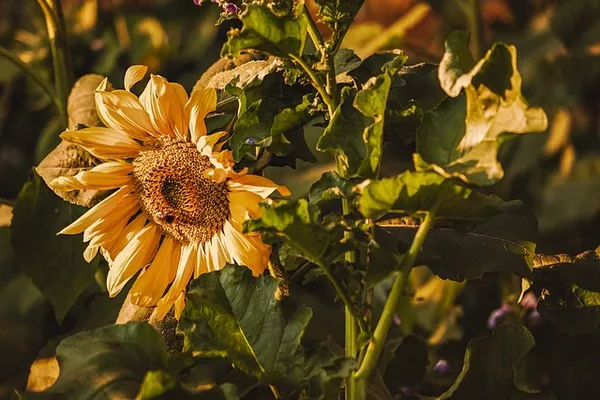Sunflowers not only add a vibrant touch to gardens but also offer a delicious and nutritious snack through their seeds. Drying sunflowers for seeds is a crucial step in the process of harvesting and preserving these seeds for consumption. Whether you’re a seasoned gardener or a novice enthusiast, understanding the proper techniques for drying sunflowers is essential to ensure the longevity and quality of the seeds. In this article, we will delve into the steps involved in drying sunflowers for seeds, providing valuable insights for a successful harvest.
Choosing the Right Sunflowers:
Before embarking on the drying process, it’s important to choose the right type of sunflowers for seed harvesting. Opt for sunflower varieties specifically bred for seed production, such as the Russian sunflower (Helianthus annuus). These varieties typically have larger and more plump seeds, making them ideal for snacking and culinary purposes.
Harvesting Sunflowers:
Timing is crucial when it comes to harvesting sunflowers for seeds. The best time to harvest is when the flower heads have fully matured, and the back of the flower head turns from green to yellow or brown. The seeds should be fully developed and plump, with the flower petals beginning to dry and fall off.
To harvest sunflowers, use sharp garden shears or scissors to cut the stem about four inches below the flower head. Ensure that the stem is strong and sturdy, as a weak stem may lead to seed loss during the drying process.
Drying Sunflowers:
Air Drying:
Once harvested, remove any excess leaves from the sunflower stems, leaving only the flower head. To air dry sunflowers, hang them upside down in a well-ventilated and dry area, such as a garage or a shed. Use twine or rubber bands to secure the stems to a horizontal bar or hook.
Ensure that the sunflowers are spaced apart to allow for adequate air circulation. Proper spacing prevents the development of mold and ensures uniform drying. The drying process may take several weeks, during which the flower heads will gradually lose moisture, and the seeds will dry out.
Brown Bag Method:
An alternative method for drying sunflowers involves using brown paper bags. Place each sunflower head individually inside a paper bag, securing the bag around the stem with twine or a rubber band. Hang the bagged sunflowers in a dry and well-ventilated space.
The paper bag method helps contain any potential mess from falling seeds and protects the seeds from dust and debris. Check the sunflowers regularly, and once the seeds are completely dry, they can be easily collected from the bottom of the bag.
Screen Drying:
Create a drying screen by stretching a piece of fine mesh or cheesecloth over a wooden frame. Lay the sunflower heads on the screen in a single layer, ensuring that they do not touch each other. Elevate the screen to allow air circulation underneath.
Screen drying is an effective method for preventing mold growth and achieving uniform drying. Rotate the sunflower heads periodically to ensure all sides are exposed to the air. This method is particularly suitable for large harvests.
Checking for Dryness:
To determine if the sunflower seeds are thoroughly dry, press a few seeds between your fingers. If the seeds are hard and resist indentation, they are ready for storage. Additionally, listen for a hollow sound when tapping the seeds; a dull sound may indicate remaining moisture.
Storing Dried Sunflower Seeds:
Once the sunflower seeds are dry, it’s essential to store them properly to maintain their freshness and prevent spoilage. Store the seeds in airtight containers such as glass jars or vacuum-sealed bags. Keep the containers in a cool, dark place to protect the seeds from exposure to heat and light, which can lead to rancidity.
Avoid storing sunflower seeds in plastic containers, as plastic can sometimes retain moisture and compromise the quality of the seeds. Including a small silica gel packet in the storage container can help absorb any residual moisture.
See also What Flowers Like Full Shade? All You Need to Know
Conclusion:
Drying sunflowers for seeds is a rewarding process that allows you to enjoy the fruits of your labor throughout the year. By following these comprehensive steps, you can ensure that your sunflower seeds are thoroughly dried, preserving their flavor and nutritional value. Whether you choose to air dry, use the brown bag method, or opt for screen drying, the key is patience and attention to detail. With a little care, you’ll be able to savor the delicious crunch of your homegrown sunflower seeds long after the harvesting season has ended.


